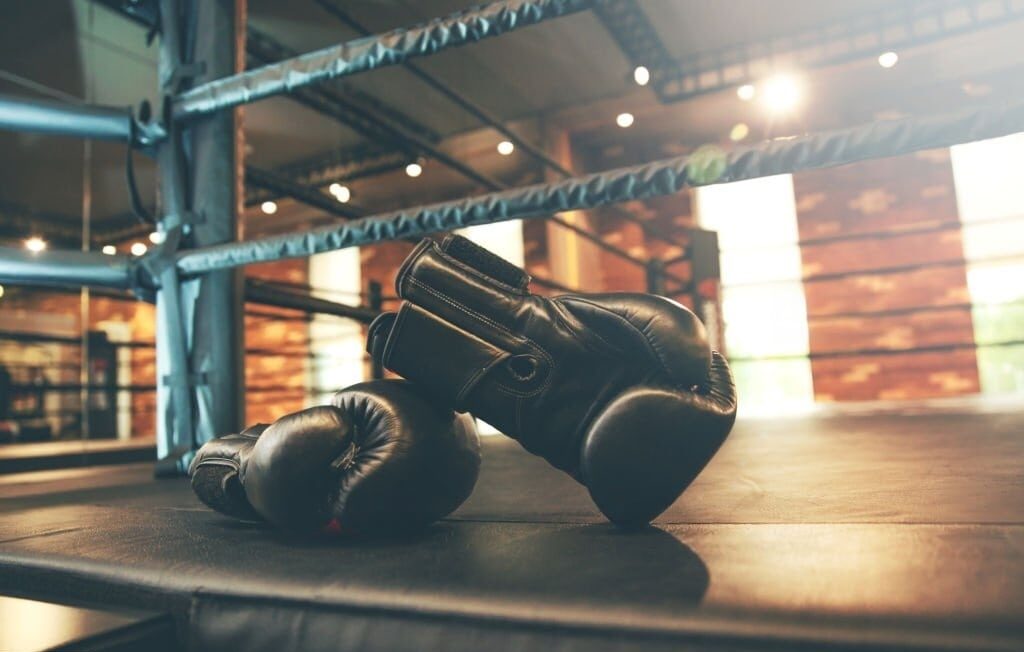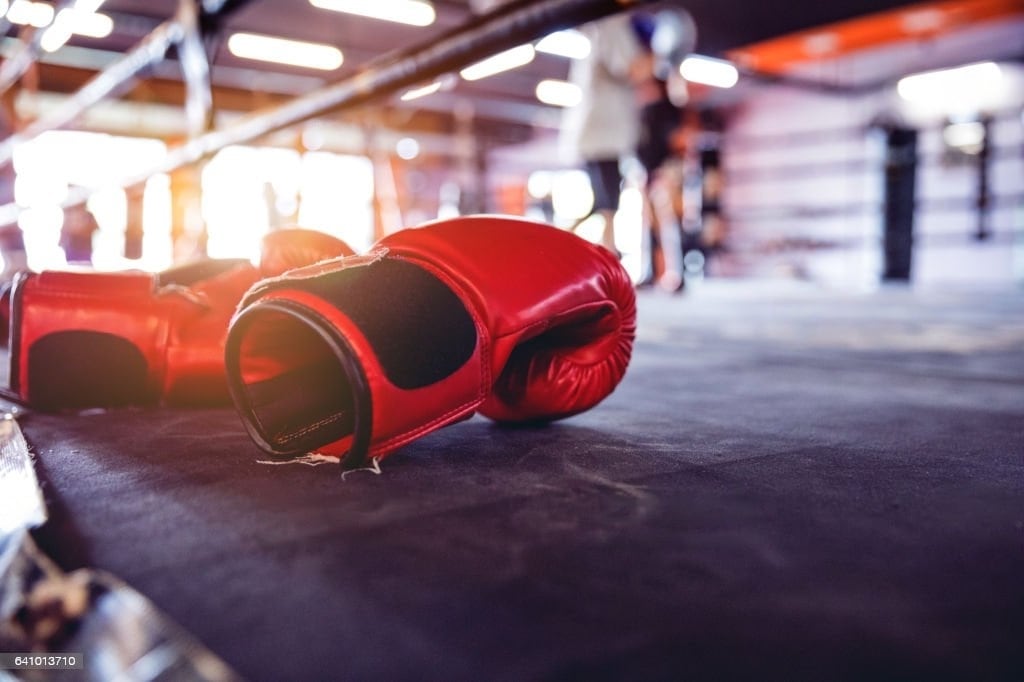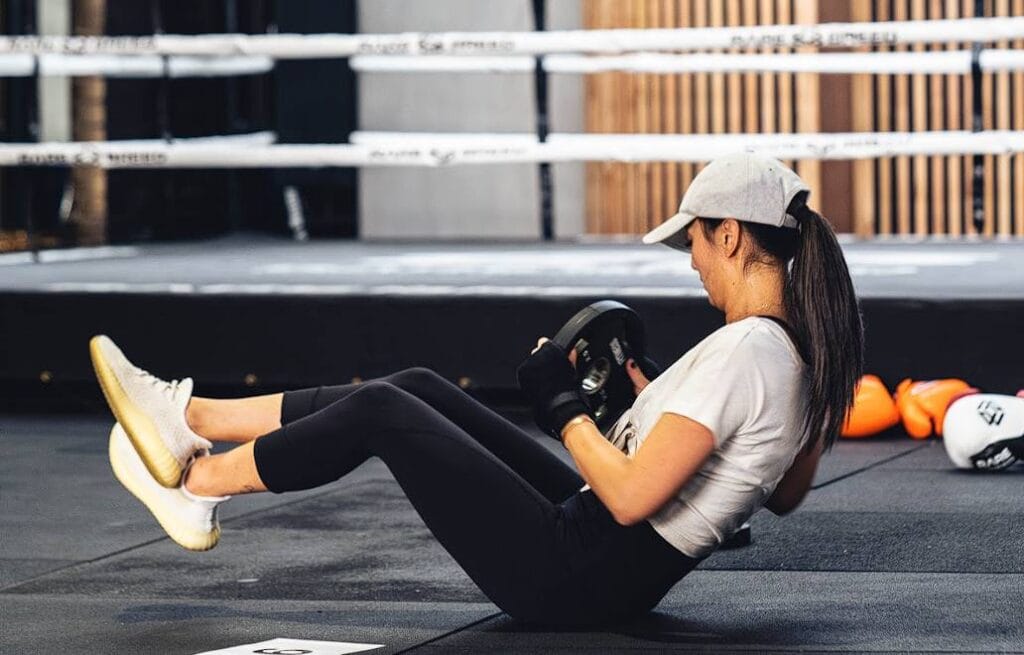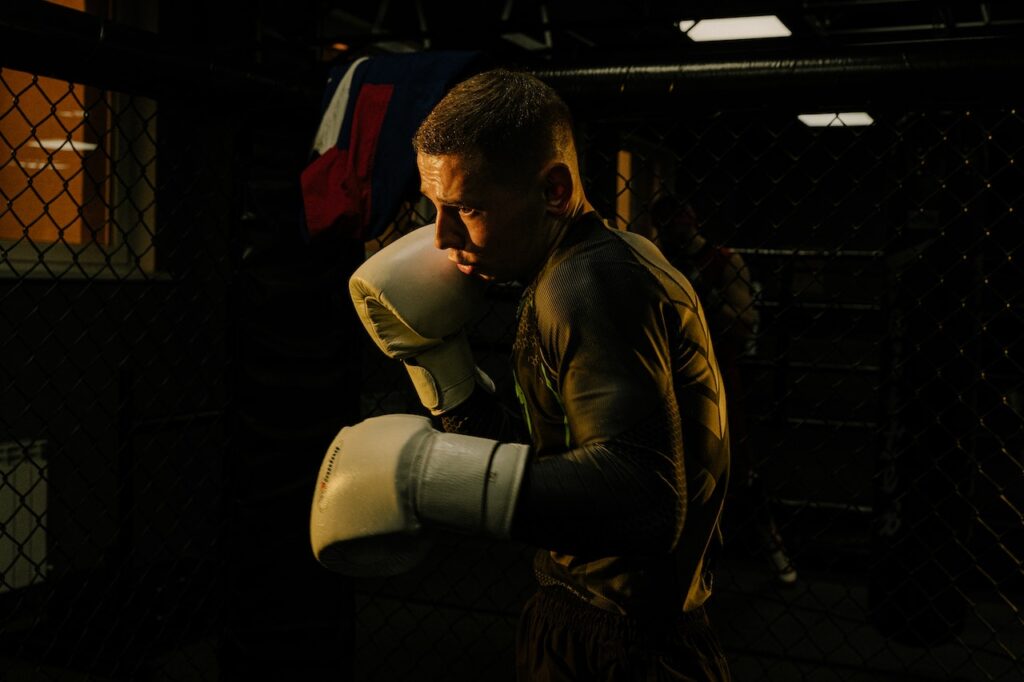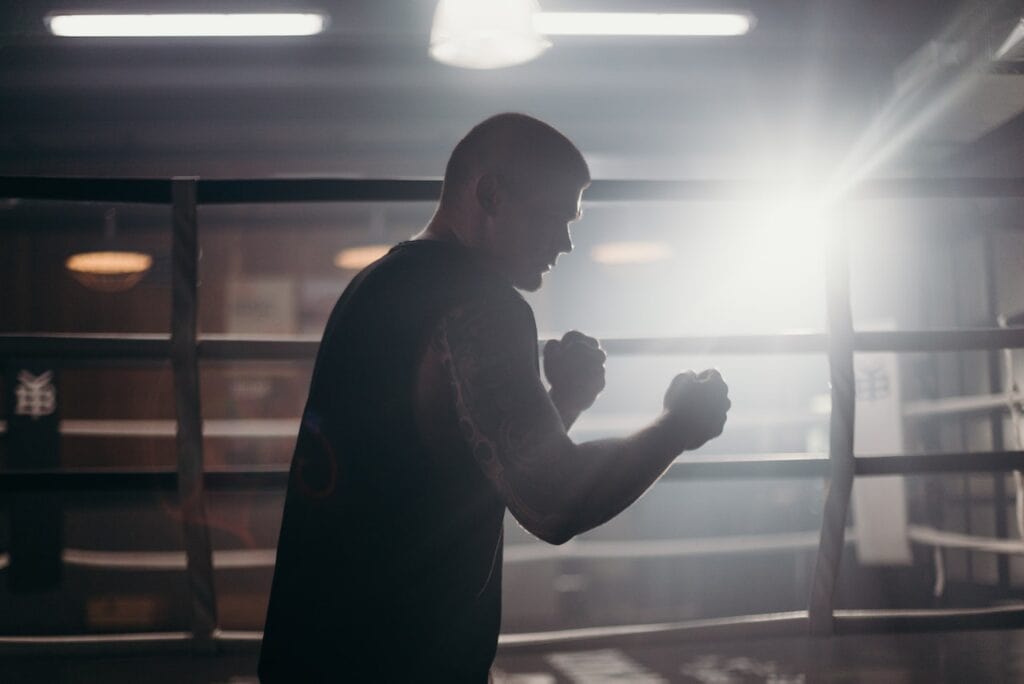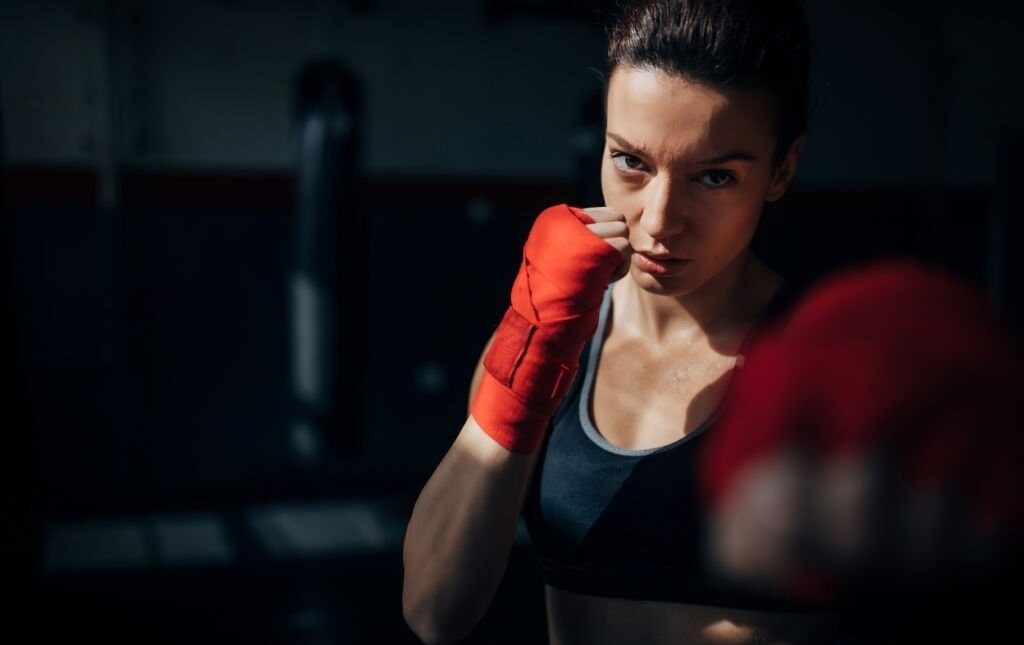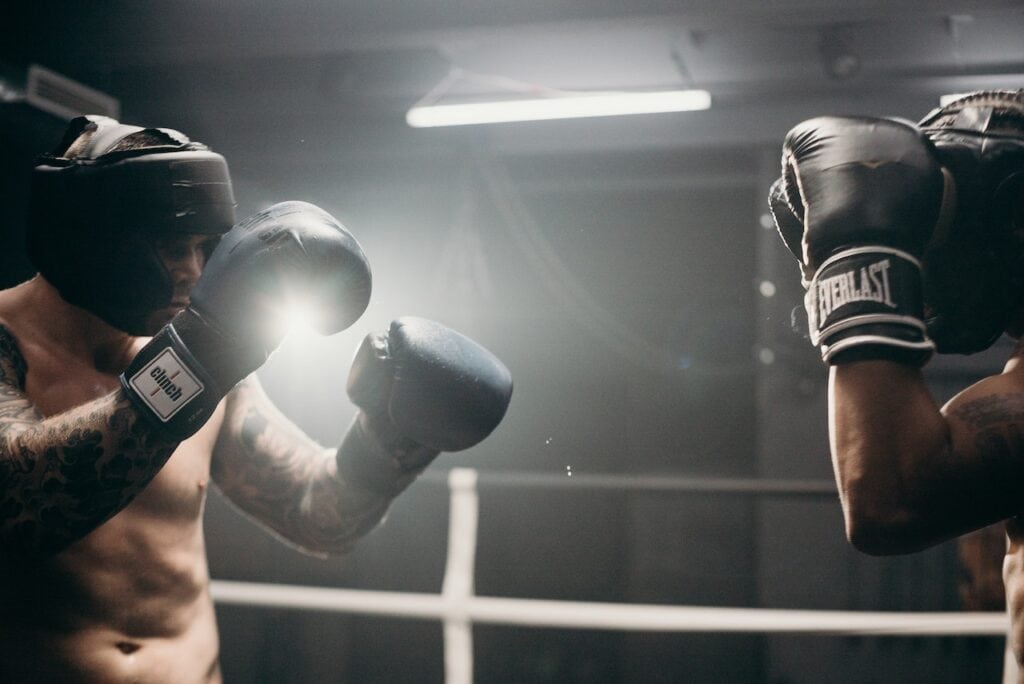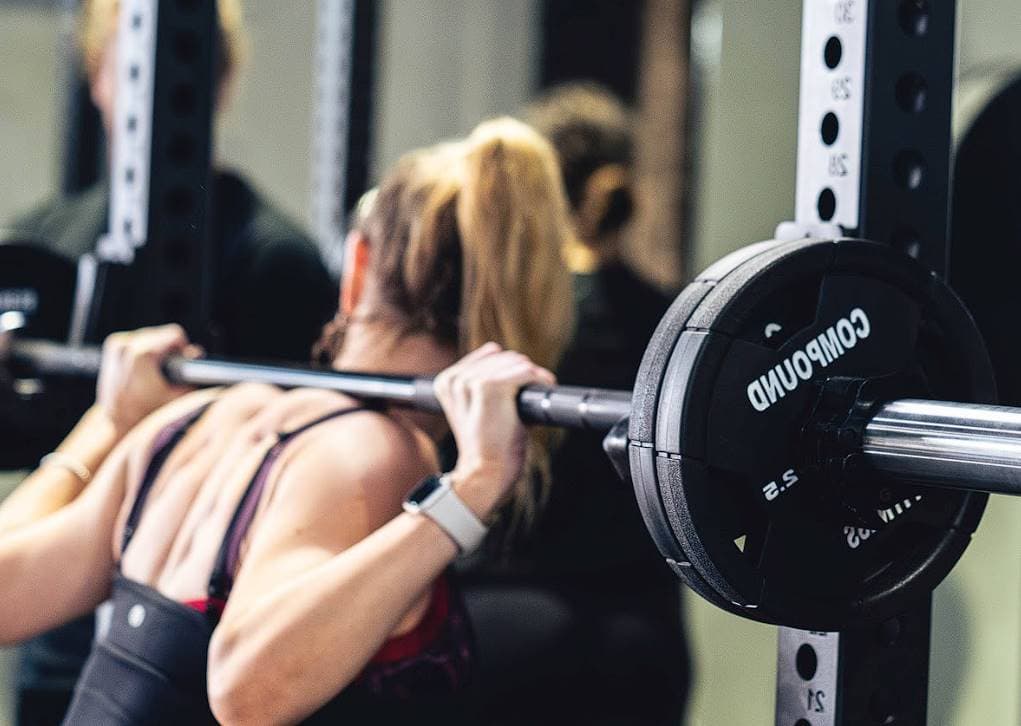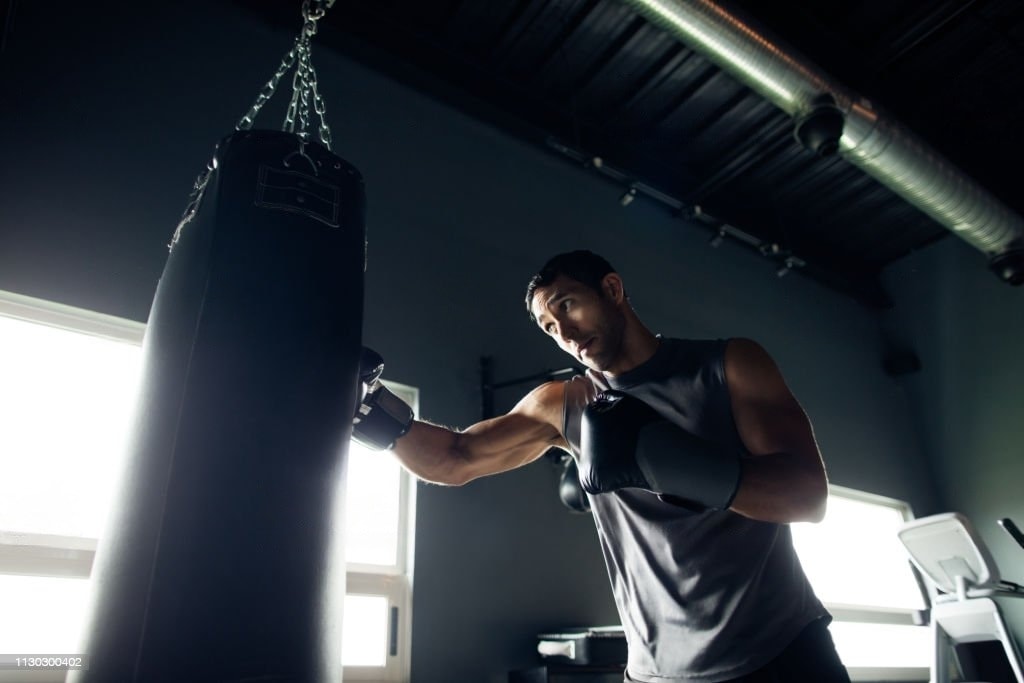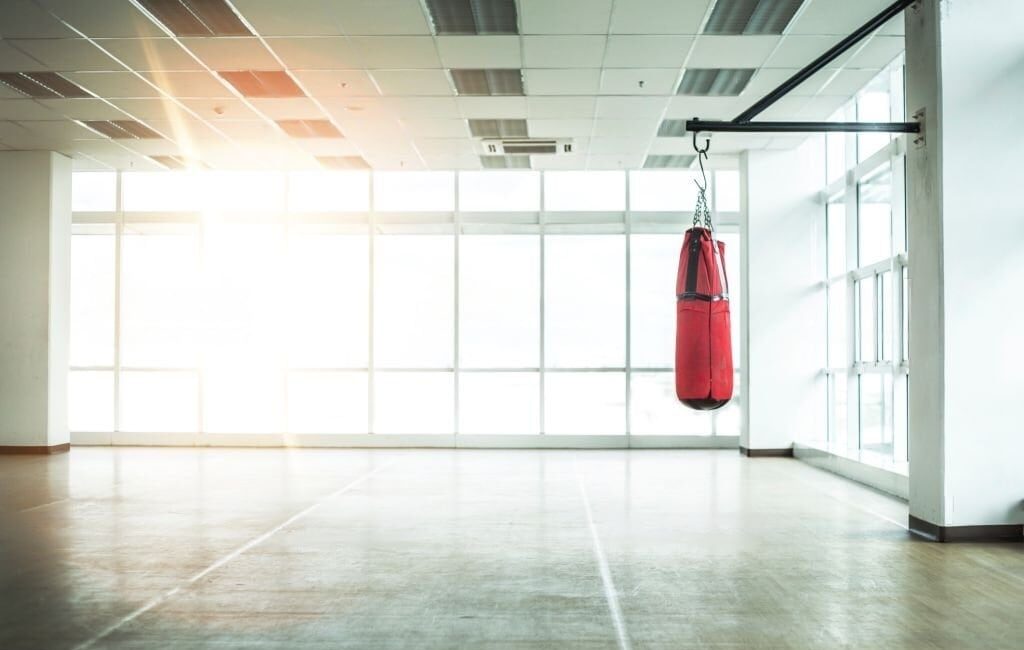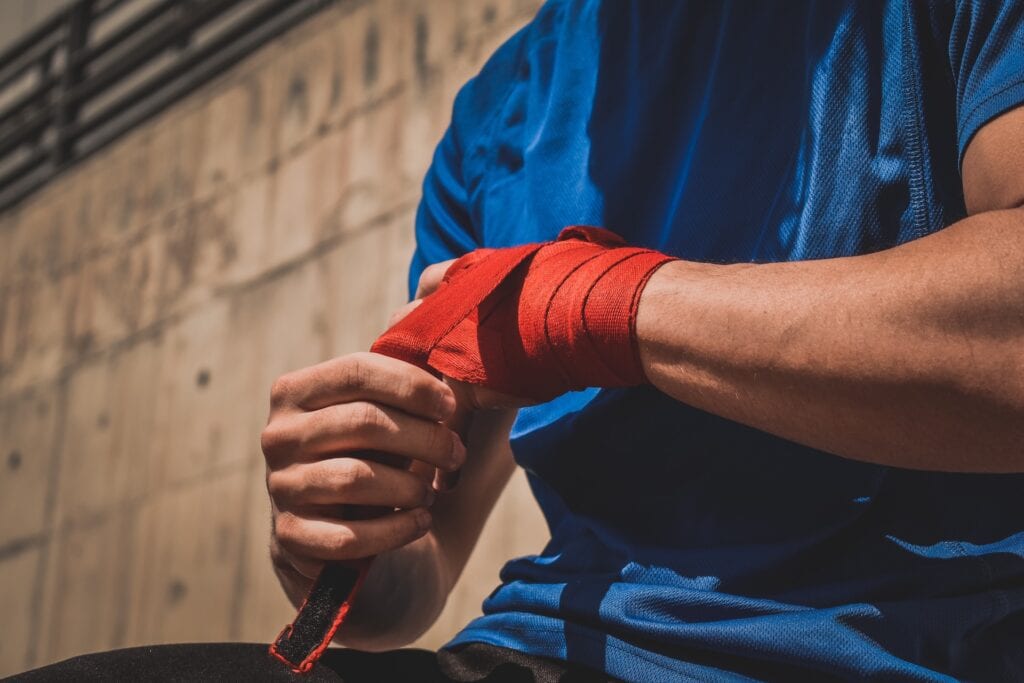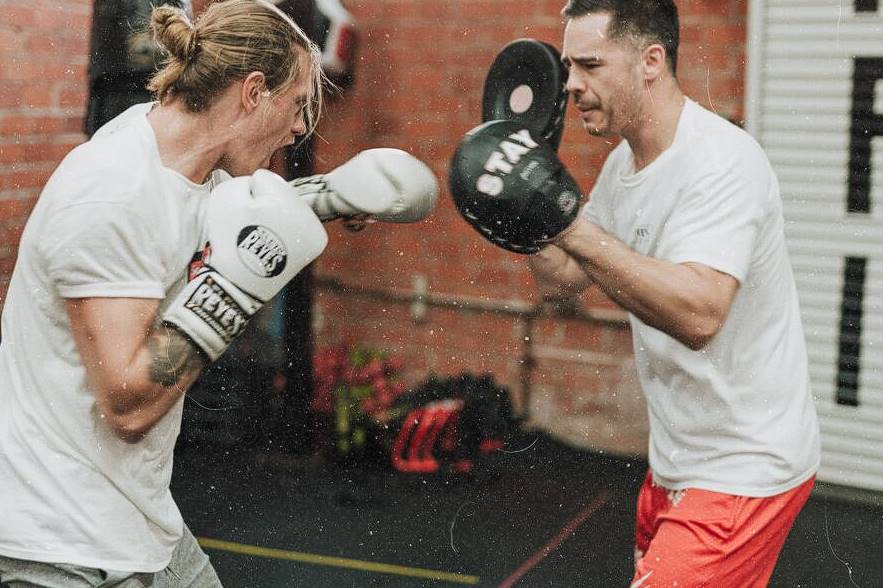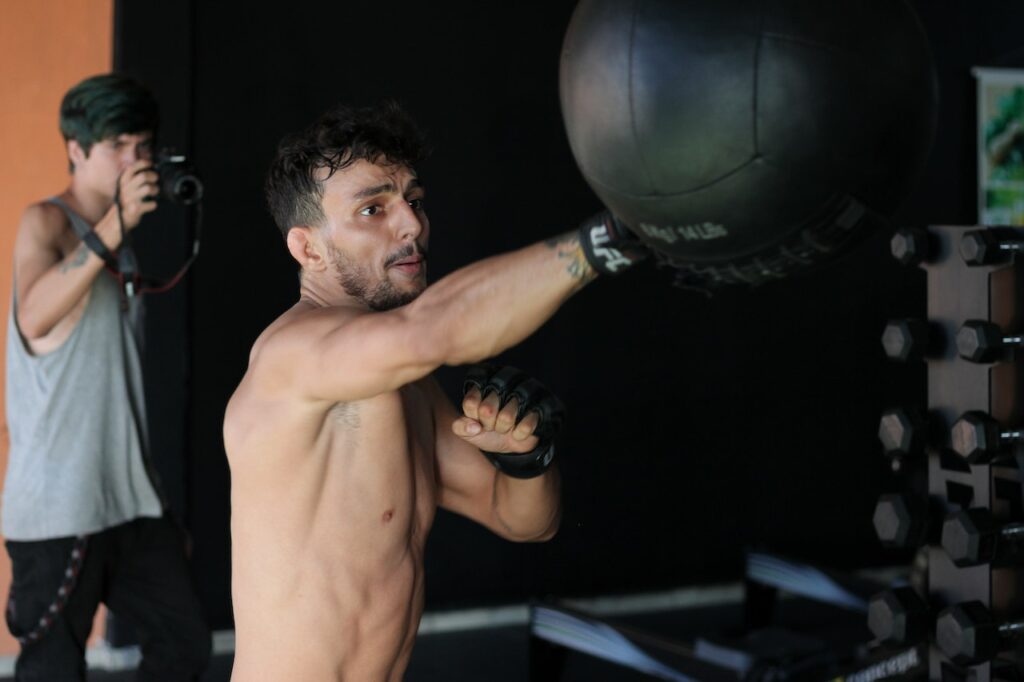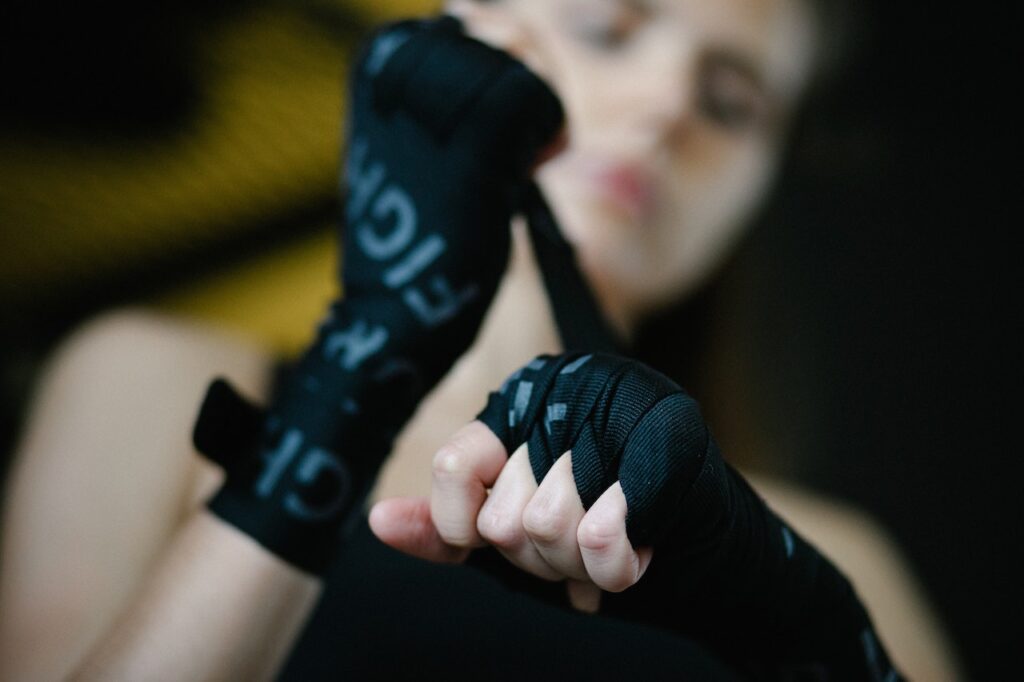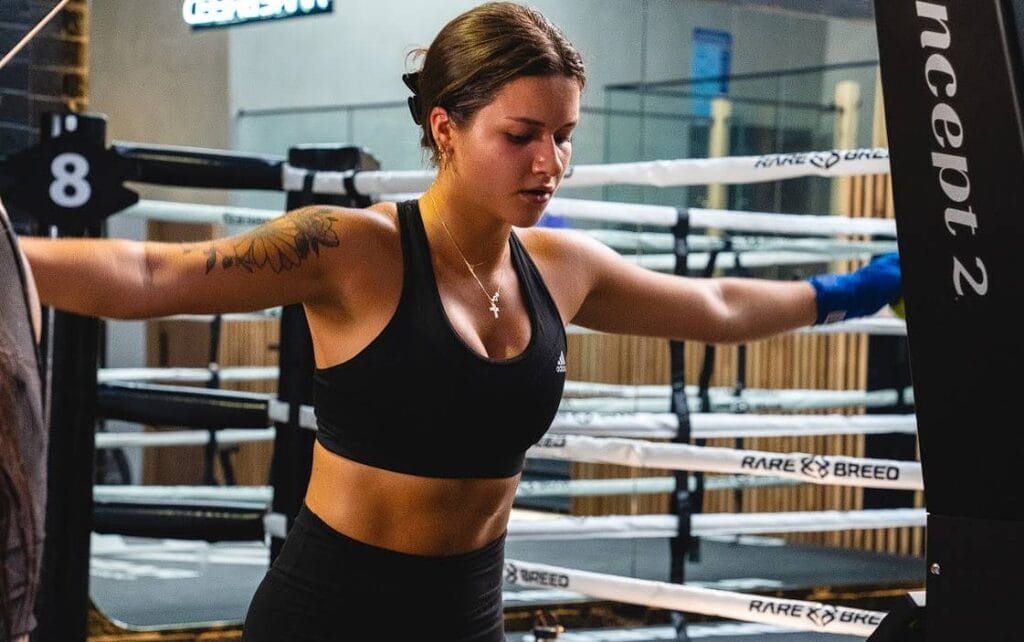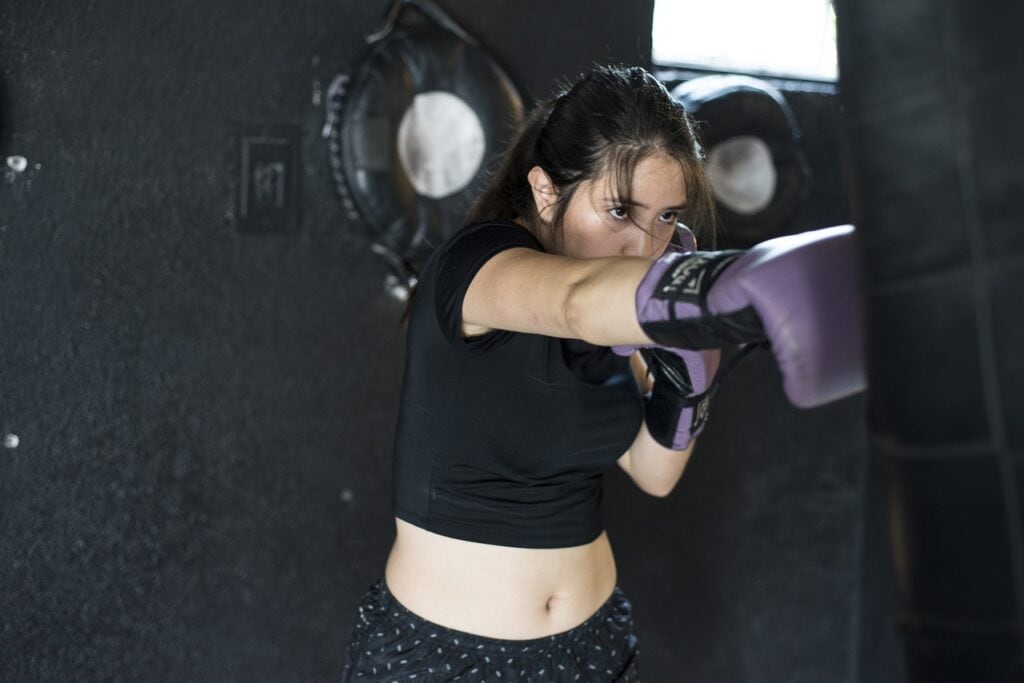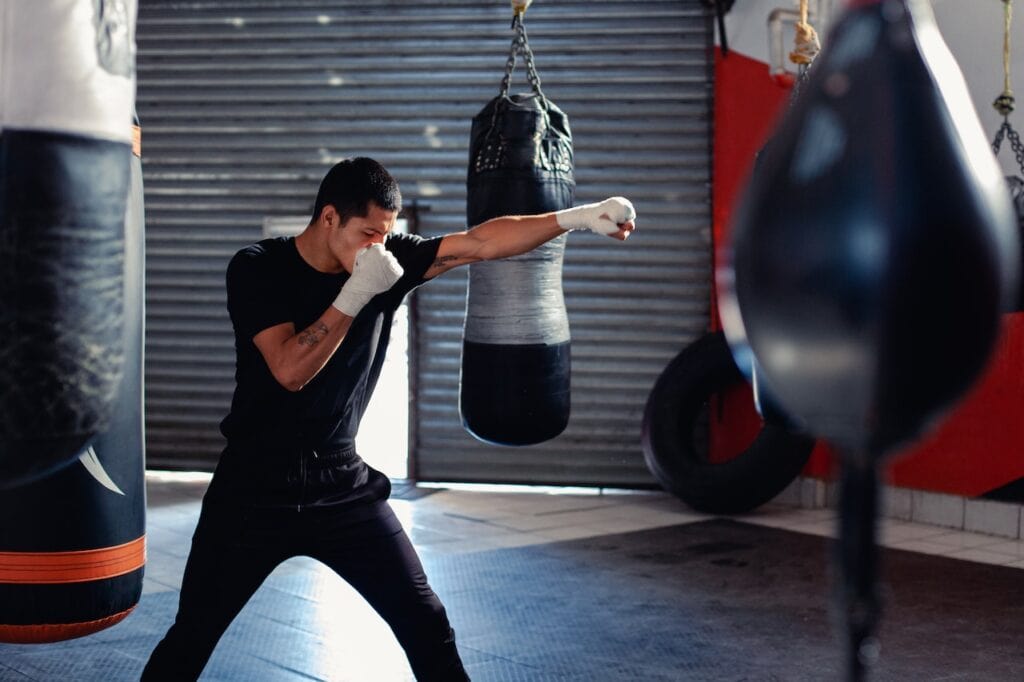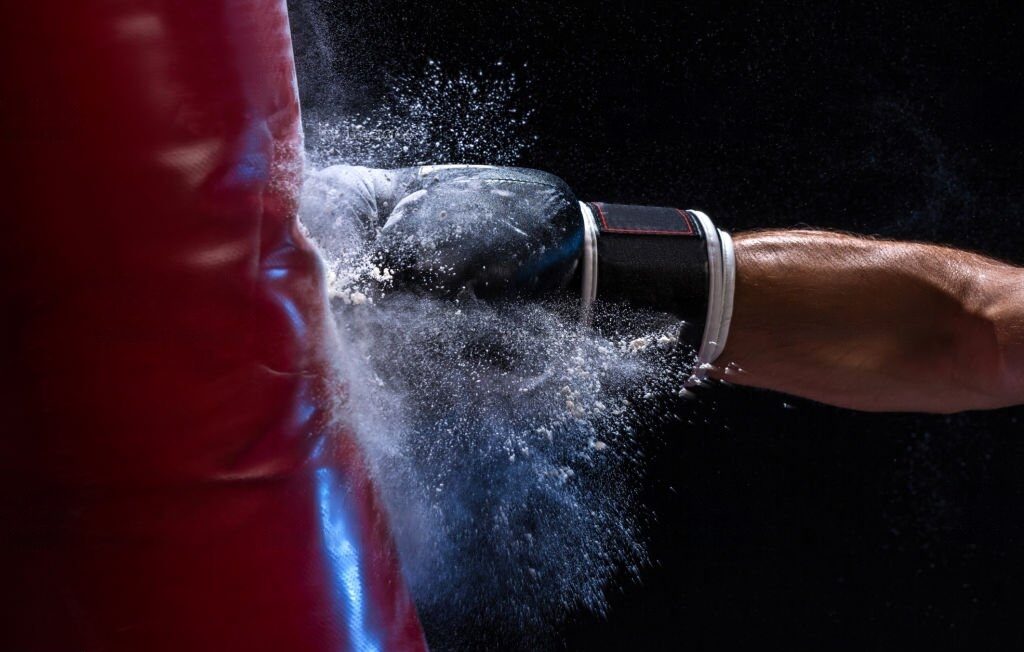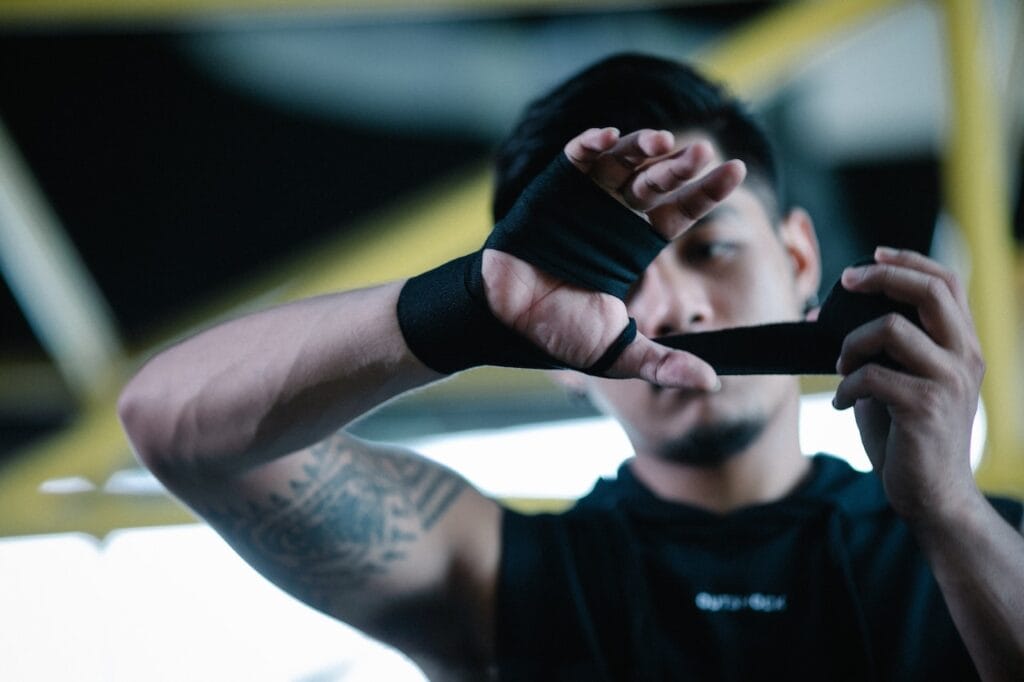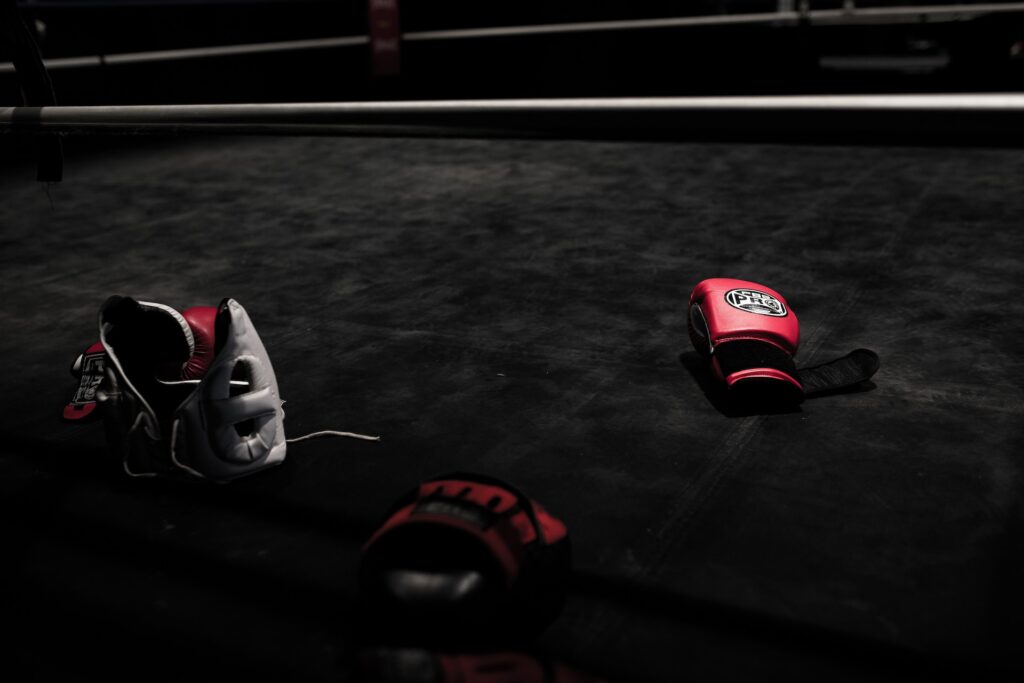If you're just getting started in boxing, you might be curious about the physical effects the sport will have on your body. Boxing involves an excessive amount of cardiovascular activity to assist you in gaining muscle mass. As a result, you could be cautious about including it in your workout program, depending on what you hope to accomplish.
To answer your question in a nutshell, yes, boxing does create muscle.
Boxers strive for lean muscle mass, which helps them build strength, endurance, and power while also boosting their quickness and agility.
Starting from the ground up delivers a powerful blow. However, you can gradually grow your muscle mass and still have complete control over your development if you use your body weight to strengthen your legs, core, shoulders, and arms.
It is possible to protect those gains while still engaging in the activity you enjoy, punching in.
Does Boxing Build Muscle? (YES, Here's How)
What Muscles Are Worked While Boxing?
Boxing is a very strenuous activity that uses almost every muscle in the human body. However, it makes it a great way to get in shape.
Each of these muscle groups plays a vitally important role in executing a powerful strike, and boxers would only be effective if they developed such muscles.
Notable muscle groups include the serratus anterior, the "boxer's muscle," the latissimus dorsi, the abdominal muscles, the biceps brachii, and the calves.
The deltoids, the rest of the core musculature, the quadriceps femoris, and the pectoral muscles are some of the other muscle groups that have the potential to play a fairly significant part during a boxing match.
So long as you’re in a calorie surplus (which you can easily calculate using a calorie surplus calculator), you can easily build muscle while boxing. And even if you're in a calorie deficit, boxing will help you lose the fat around your muscles, giving you a more aesthetic appearance.
What Muscles Grow the Most From Boxing?
Even though one round of boxing is considered fairly strenuous for the entire body, not all these muscles grow to the same level.
Because of individual variances in muscle mass, how muscles react to various kinds of stimuli, and the kinds of motions that are involved in boxing, certain muscles will benefit from the activity of boxing significantly more than others.
The Gastrocnemius and the Soleus (Calves)
It is not the upper body that generates the force behind a forceful strike; rather, that force is generated by pressing into the ground and translating that energy via the arms. But, again, it is something that any boxing trainer will teach you.
It should come as no surprise, given that the calf muscles are the ones closest to the ground, that these are also the muscles that are stimulated to the greatest degree throughout most boxing-focused training sessions.
Also, the muscle fibres that make up the gastrocnemius and the soleus respond rather efficiently to high levels of volume as opposed to extreme levels of resistance. These two muscles have similar muscle fibres.
Boxers, who may recruit their calves dozens of times within several seconds to attack, dodge a hit, or otherwise move around the ring, are ideal candidates for this since it is doubly suitable for them.
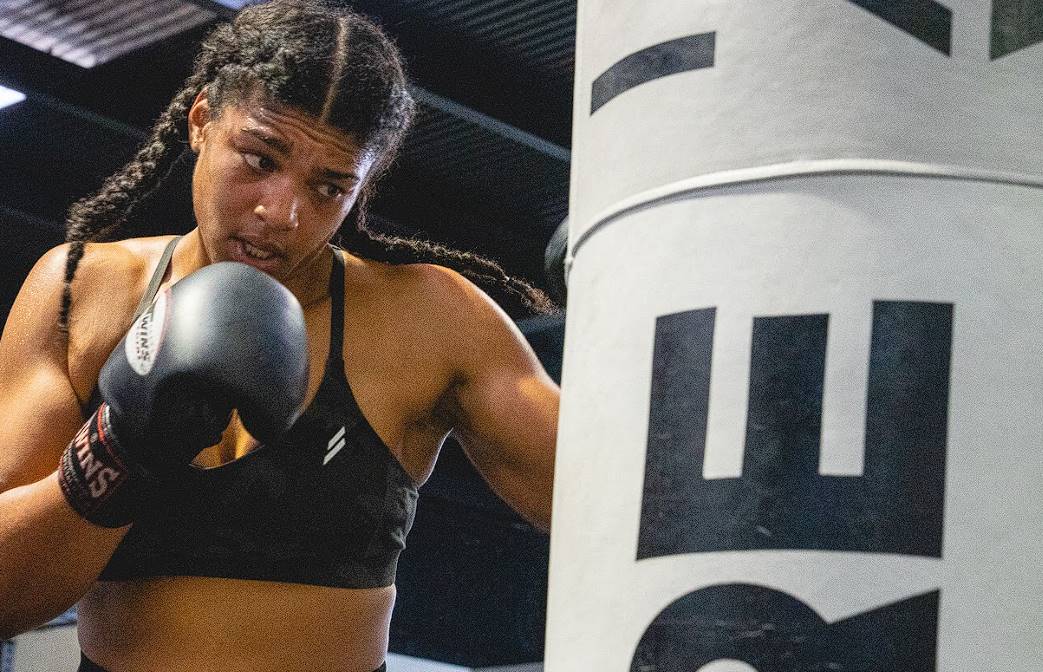
The Core Muscles
The core musculature includes the back's muscular groups responsible for stabilisation, as well as the abdominal muscles on the anterior side of the torso.
Because of their placement and range of motion, the core muscles are involved in practically every activity that an individual does, albeit to a lesser or greater degree.
It is much more important for boxers because they rely on their core to transfer force from their legs to their arms or absorb punches to the body without being knocked down. Therefore, boxers need a strong core to avoid being knocked down.
Individuals who participate in boxing training will frequently observe, over time, a more stable and powerful set of abdominal muscles and a decreased risk of injury as the core muscles become accustomed to forcing.
Although the core muscles do not hypertrophy significantly, individuals who participate in boxing training often notice these changes.
The Quadriceps and the Hamstrings
The muscles of the quadriceps, femoris and hamstrings are both highly important. Just as the calves are responsible for creating a significant portion of the power behind a good strike, so are the quadriceps femoris.
These two muscle groups are among the most effective for executing any movement involving the legs, including walking, bracing oneself for a strike, or launching a punch. This is because they are situated around the upper thigh to maximise motion and force production.
As a result of this kind of frequent stimulus, combined with the fact that the quadriceps and hamstrings are among the largest muscle groups found in the human body, boxers will frequently notice significant growth in terms of mass and power in these two muscles as they train for their sport.
The Hip Flexors
Boxing is a sport that requires appropriate striking technique, which entails twisting the pelvis and waist to maximise force output through the body. Rotation and movement of the hips are other important biomechanics in boxing.
Furthermore, rapid movements such as weaving, avoiding, or otherwise maintaining optimal movement cadence are all loosely tied to how the hip flexors are recruited. Rapid movements require the hip flexors to work in conjunction with one another.
Boxers will see increases in the strength of their hip flexors and improvements in their coordination and endurance, even though it is highly improbable that these muscles will undergo significant hypertrophy due to their training.
The Anterior Deltoid Head
The deltoid muscle, also known as the shoulder muscle, is segmented into three axial heads. The anterior deltoid head, also known as the front-facing deltoid head, maintains the arm's position and controls its movement during exercise.
When it comes to boxing, the anterior deltoid head not only contributes to the transmission of force through the arm when the boxer is throwing a punch, but it also helps the boxer keep their guard up while in the ring.
Although the other two heads of the deltoids are also responsible for these actions to some degree, the anterior deltoid head receives the greatest level of stimulus and consequently develops to the greatest level as well. Again, it is because the head receives the greatest level of stimulation.
The Musculature of the Upper Arm
The biceps brachii, triceps brachii, and brachialis are the three muscular groups that comprise the upper arm. These three muscle groups are activated to a large degree during any arm movement.
It can be seen in boxers when the brachialis is recruited during a jab, and it can also be seen when the biceps are recruited during an uppercut. The triceps also play a key role in humeral adduction, which means they are recruited during any action involving the arm travelling away from the body. It means that the triceps are responsible for the majority of the work in humeral adduction.
Boxing athletes frequently develop lean and relatively muscular upper arms without specifically training for such muscular growth because of the frequent muscular recruitment that occurs in the sport. This frequent muscular recruitment meshes quite well with the low body fat of the arm and the relatively large size of these muscle groups.
Does Boxing Build Muscle?
Boxing, which you can now see is a full-body activity, may lead you to conclude that it effectively increases muscle mass throughout the body. On the other hand, this is not accurate. Boxing is not effective for building muscle. Boxing does not stimulate the entire system responsible for creating muscular tissue, regardless of whether you are shadowboxing or punching a heavy bag.
Both mechanical tension and metabolic stress are included here. It is because for a muscle to create significant forces (for example, lifting big loads), it must be able to move over its full range of motion (from a contracted position to a fully extended state) for the mechanical tension to be maximised.
Yet, mechanical strain can also grow when lesser weights are taken to their breaking point or brought dangerously close to it. In addition, when performing an activity at a slower pace, you can generate greater tension within the muscle (think of the most difficult repetition of a set of bench presses).
The accumulation of harmful by-products while producing energy is known as metabolic stress. As you perform high-rep exercises, you will feel a "burning" sensation caused by the by-products produced throughout the exercise.
Boxing does not produce significant muscular tension or metabolic stress necessary to trigger new muscle growth. In addition, boxing only involves a little force generation because there isn't any external barrier or resistance to overcome, so it's a great sport for people who aren't very strong.
Does Boxing Build Back Muscle?
Boxing solely involves acts that take place in front of the fighter. Any load does not involve moving in a horizontal plane or pulling motions. As a result, boxing will not help you build back up your muscle.
Although being in the clinch may be regarded as activating the back muscles, relatively little time is spent in these positions, the movement is frequently passive, and the clinch mostly involves isometric contractions performed at short muscle lengths.
Does Boxing Build Leg Muscle?
Boxing is not an effective way to improve leg muscle. In the boxing stance, knee and hip flexion are kept to a minimum. This indicates that the muscles of the legs do not undergo nearly any range of motion, which is essential for increasing the amount of mechanical tension and metabolic load.
Does Boxing Build Arm Muscle?
Although boxing heavily engages the arm muscles, it is impossible to grow arm muscles through boxing. Because boxing does not require any external resistance, no burden is exerted on the muscles due to the activity.
Boxing Workout For Building Muscle
Warm-Up
- Shadowboxing x 5-10 min
- Jump rope x 5-10 min
Workout
A1) Push-Ups 3-4 x 20-30
A2) Pull-Ups 3-4 x 5-10
B1) Bodyweight Squat or Single Leg Squat 3-4 x 50 or 3-4 x 10-20/leg
C1) V-Ups 3 x 15
C2) Russian Twist 3 x 20
C3) Hanging Leg Raise 3 x 10
Does Boxing Build Muscle? (Must-Read for Beginners)
How Do Boxers Build Muscles Without Lifting Weights?
Boxers build muscle by including various exercises that target certain body parts and calisthenic and high-intensity interval training in their workout routine. This type of training can increase their endurance while stimulating multiple muscle groups without lifting any weights.
Continue exploring this topic with me:
1. Free-Body Exercises
Lifting weights is, without a shadow of a question, one of the best ways to focus on a certain group of muscles and increase the amount of muscle mass in a specific location. Boxers, conversely, do not benefit in the least from this bulking up.
Because of this, nearly all boxers participate in free-body workouts such as push-ups and pull-ups to simultaneously target their different muscle groups.
It simply works by stimulating your muscles in a way that is more like a more distributed method, giving you greater control over your muscles while preventing the targeted bulking that you could otherwise experience.
2. HIIT Training
High-Intensity Interval Training, or HIIT, is widely regarded as one of the most efficient methods for working out your body. The primary objective is to raise the difficulty level of each set of exercises to the greatest extent possible so that the target heart rate can be maintained for the shortest amount of time possible.
Although traditional strength training involves lifting weights and using other gym equipment, high-intensity interval training (HIIT) is an entirely new technique for getting in shape.
3. Extra Attention toward Abs
When you watch boxing contests or any of Rocky's movies, you'll notice that the fighters have different cuts and abs that have been carefully sculpted.
To strengthen their abdominal region, a significant number of professional boxers incorporate an unending series of situps into their boxing training regularly. A wild punch to the stomach is nothing to worry about if you have excellent six-pack abs since it boosts your confidence and makes it possible for you to resist it.
4. Calisthenic
Boxers use minimal gym equipment to perform the great exercise known as callisthenics. The goal of this workout is to work many muscle groups simultaneously.
What Muscles Are Built by Boxing?
Boxing training contains a lot of bodyweight movements, which can help you strengthen the muscles in your upper body and core. In addition, it works various muscles in your legs, thighs, and hips, ultimately resulting in an all-around well-developed body combination.
1. Arms
Boxing is a fantastic full-body workout that helps you improve your muscles while developing your arms. But, even if you don't put any more effort into anything but boxing training, your forearm muscles, biceps, and triceps are going to get stronger regardless of what you do.
BUT:
It would help if you kept in mind that strengthening your arm muscles will not assist you in producing more force. However, doing so is necessary because your shoulders and arms will be involved in every offensive motion you experiment with.
These muscles provide the power behind each punch you throw and ensure a solid connection with your opponent. Because of this, most professional boxers want to have strong arms that are still relatively slender compared to arm muscle groups that are more robust.
2. Core Muscles
Boxers must focus on this particular collection of muscle groups because they are among the most powerful and significant. They originate in the muscles of your back, abdominal region, hips, and shoulders and stabilise your entire body.
In addition to being a component of your abdominal muscles, they are also found in your back muscles. These core muscles combine the power you produce in your legs and hips and transfer it to your arms. Your arms are the recipients of this power.
3. Legs and Hips
Many people who are just starting out believe that boxing is all about your two fists and that your legs don't matter all that much. Nonetheless, it is an important muscle group that requires proper training to produce your finest performance while competing in the ring.
The muscles in your thighs, known as the quadriceps and hamstrings, are the ones that are accountable for lifting your body off the ground and generating the necessary amount of momentum and force throughout the rest of your body.
If you know how to pivot your body correctly and get the most out of these muscles, your hips, another essential muscle group, may provide you with massive power.
4. Shoulders
Boxing is a sport that requires not only strength and motor skills but also endurance on the part of its participants. Do you experience a burning sensation around your shoulders after an intense boxing training session?
Your abdominal muscles are responsible for this effect. I have already described how your body's core set of muscles transfers most of the power. Yet, it first passes through the shoulder girdle, which acts as a filter, before entering the arms.
Boxers with strong shoulder muscles can keep their hands up in front of their faces for longer, which not only allows them to protect their faces but also gives them the opportunity to throw a punch whenever one presents itself. Because of this, trainers make sure to focus their attention on this particular region.
5. Calves
The calf muscles are located in the back of the lower leg, in the space between the ankle and the knee. These muscles allow you to move your heels in whichever direction you want without restriction.
The muscles in your calves are extremely important to your footwork when you're boxing. Thanks to this, you will be able to start the attack, lean forward, and throw the punch in the appropriate direction.
6. Small Muscle Groups
Boxers focus their training on a wide variety of other muscle groups in addition to their primary ones. Everything in your body, from your neck area to the muscles in your fists, is important when you're in the ring.
Many combat athletes train their neck muscles to protect themselves from being knocked out unexpectedly by a powerful blow delivered in a weak position.
Moreover, the smaller muscles that compose your fist are as follows: Not only does clenching your fist make your blow far more powerful, but it also lessens the likelihood that you will sustain an injury because there is less space between your bones for them to become dislodged.
Is Boxing Good For Muscle Growth?
Boxing is an excellent kind of exercise, yet, it will not cause you to develop massive slabs of muscle anyplace on your body. If you want to add muscle mass, go to the gym and follow a strength training plan designed to help you add muscle mass. If, on the other hand, boxing is your primary objective, then I suggest that you steer clear of putting on a lot of muscular bulk.
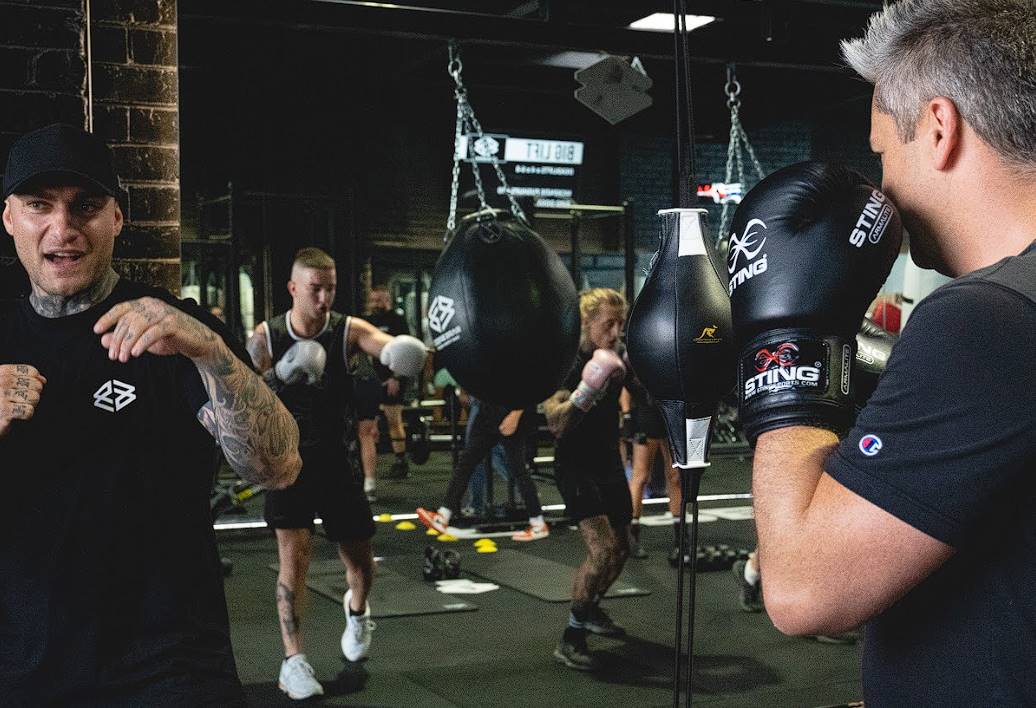
Common Muscle-Building Exercises of Boxing Training
Bag Work and Shadow Boxing - Full Body Workout
Striking a punching bag or otherwise practising boxing without any form of equipment is regarded as an effective workout for growing muscle across the entire body and is considered one of the most iconic combinations of workouts in the sport of boxing.
When compared to hitting a punching bag, shadow boxing offers little to no resistance and is, as a result, less likely to develop musculature. However, the resistance encountered when hitting a punching bag is frequently sufficient to result in hypertrophy and strength adaptations over time.
When exercised in this manner, muscles are more likely to expand in size by small increments. Still, they greatly improve strength and endurance, particularly those of the core, calves, serratus, and back muscles.
Mountain Climbers - Core and Calves
Mountain climbing is a type of aerobic exercise that boxing athletes frequently perform. Since mountain climbers train the smaller muscle groups used during boxing in addition to the cardiovascular system, they are particularly useful for sprinters and athletes who compete in combat sports.
Mountain climbers, in particular, are known to be very good at training the muscles of the core, in addition to the two muscle groups that combine to form the calf muscles.
These two groups of muscles, which are often overlooked, are essential to the execution of virtually every movement in the sport of boxing. Mountain climbers use these muscles to considerable effect, increasing their hypertrophy and endurance.
Push-Ups - Chest, Serratus and Arms
The push-up is a time-honoured bodyweight exercise that boxers have used for decades. It is an extremely efficient way to strengthen the pectoral muscles, the serratus anterior, the deltoids, and the triceps brachii of the upper body.
In the sport of boxing, each of these muscle groups plays an essential role in the management and translation of force, and they are the kind of muscles that, in general, respond rather well to the kinds of training stimuli created by a set of push-ups.
A large amount of hypertrophy and strength growth will be encountered in these muscles due to the anaerobic and relatively high-resistance nature of push-ups. It will result in the boxer having a more powerful and muscular upper body.
Jump Rope - Calves and Core
Jumping rope is another cardiovascular activity frequently included in boxing training programs. In these programs, jumping rope serves to teach the athlete proper cadence and enhance the player's agility.
One of the less obvious advantages of using a jump rope is that it may strengthen the muscles in the calves and the core.
The jumping motion featured in a set of jump ropes frequently involves the entire body weight being launched off the ground, with the lower body as the primary power source. Consequently, a significant amount of resistance will be repeatedly placed on the calves' muscles, which can strengthen them.
Alongside this, the core muscles make minor motions to stabilise the body while in the air, which also results in some development within those muscles.
How to Maximise Muscle Growth From Boxing
Boxing is a sport that requires significant amounts of muscle, and while training is undoubtedly highly vital for this process, more is needed to ensure that muscle growth occurs on its own.
Other aspects of the boxer's lifestyle, such as allowing these muscles ample time to recover and providing them with the appropriate resources to do so, must also be considered.
It is a start in the right direction to ensure that the boxer consumes enough protein and calories. Still, they also need to take time off in between training sessions, which is something that the hard training that competitive boxers undergo does not allow for.
As a result, to prevent themselves from becoming overtrained, many modern boxers have turned to a method of training known as periodisation, in which the intensity level and type of workouts performed fluctuate. This ensures that the body is allowed to heal as required.
Conclusion
Hence, will a boxing workout allow you to acquire more muscle? The correct response is "YES."
Boxing is a phenomenal full-body workout that may help you gain muscle in your legs, hips, core, arms, chest, and shoulders. If you want to get in shape, try boxing. Strength, speed, hand-eye coordination, agility, endurance, and power are other areas that can benefit from.
Boxing is a wonderful way to develop your cardiovascular system since it keeps your heart rate up, providing great exercise for your heart and lungs. In addition, boxing is an excellent approach to improving cardiovascular health. Boxing is associated with many outstanding health benefits, including weight loss, stress reduction, the elevation of self-esteem, and improved posture.
There are a lot of different activities that can help you get in shape, but it can be challenging to find an efficient fitness routine that's fun enough to keep you coming back for more.
Boxing workout courses are always evolving, which helps to keep participants from becoming bored and ensures that they remain on their toes. It is just one of the many advantages of participating in boxing. Hence, if you seek the best way to get in shape, gain muscle, and even have a little fun, boxing is the activity for you.
Frequenly Asked Questions
Is boxing suitable for beginners who want to build muscle?
Yes, boxing can be suitable for beginners who want to build muscle. Many boxing gyms and trainers offer classes or programs specifically designed for beginners. These sessions focus on teaching proper technique, building foundational strength, and gradually increasing the intensity of the workouts. Starting with a solid foundation and gradually progressing will help beginners build muscle safely and effectively. It's important to seek guidance from a qualified instructor to ensure proper form and minimize the risk of injury.
Can boxing alone help me lose fat and build muscle simultaneously?
Boxing can be an effective tool for both fat loss and muscle building, but achieving simultaneous fat loss and muscle gain (body recomposition) can be challenging. Typically, these two goals require different nutritional and training approaches. However, suppose you are new to boxing or have a higher body fat percentage.
In that case, it's possible to experience some initial fat loss while gaining muscle due to the overall increase in physical activity and caloric expenditure. For more significant changes, it's beneficial to prioritize one goal at a time through targeted training and appropriate nutrition.
Will boxing make me bulky like a bodybuilder?
No, boxing is not likely to make you bulky like a bodybuilder unless you specifically train for that goal. Boxing primarily promotes lean muscle development, strength, and muscular endurance rather than extreme muscle mass. The physique of a boxer tends to be more athletic and defined rather than heavily muscular. However, through proper nutrition and training adjustments, it's possible to modify your boxing routine to focus on hypertrophy and achieve a more muscular appearance if desired.
How frequently should I box to build muscle mass?
The frequency of your boxing training sessions depends on your fitness level, goals, and recovery capacity. To build muscle mass, it is generally recommended to engage in boxing training at least three to four times per week. This allows for adequate stimulus and recovery time. However, it's important to listen to your body and avoid overtraining. Incorporating rest days and proper nutrition are also essential for muscle growth.
Do I need to lift weights in addition to boxing to build muscle mass?
While boxing can contribute to muscle growth, incorporating weightlifting exercises can further enhance your results. Weightlifting allows you to target individual muscles and increase overall strength specifically. By combining boxing training with a well-rounded strength training program, you can optimize muscle development and achieve a balanced physique. Consult with a fitness professional to design a training regimen tailored to your goals.

